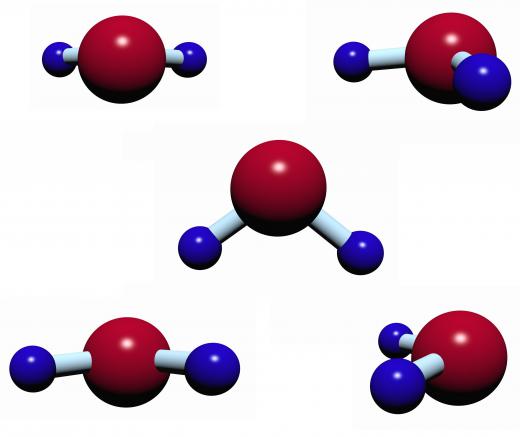What Is Ferrous Sulfate Heptahydrate?
Ferrous sulfate heptahydrate (FeSO4·7H2O) is an iron compound that is formed by the action of sulfuric acid on iron. It also occurs naturally as the fairly common mineral melanterite, which is thought to originate from the oxidation of iron sulfides such as pyrites. The compound is a pale green, crystalline solid and used to be called copperas or “green vitriol.” In early times it was used in the production of sulfuric acid, but this method was superseded early in the 18th century. Ferrous sulfate heptahydrate is now used as a mineral supplement, providing a source of iron, and is applied to soils to relieve iron deficiency.
It is an ionic compound that features iron in its +2 oxidation state, which means that it forms a cation that provides two electrons to an anion, in this case the sulfate anion, which accepts the two electrons. Iron can exist in two oxidation states, +2 and +3. In modern chemical nomenclature, these are known as iron II and iron III, but were formerly known as “ferrous” and “ferric,” respectively. The modern name for ferrous sulfate heptahydrate is thus iron II sulfate heptahydrate, but it is still often called by its old name.

The “heptahydrate” part of the name indicates the presence of seven water molecules in the crystalline form of the compound. This is sometimes known as “water of crystallization” and is found in many metal salts, for example copper sulfate and cobalt chloride. Heating ferrous sulfate heptahydrate drives off the water, leaving anhydrous ferrous sulfate, a non-crystalline white powder. It can be restored to its crystalline hydrated form by adding water. In most contexts, the term ferrous sulfate is used to refer to the heptahydrate.

Stronger heating of the anhydrous form releases sulfur dioxide (SO2) and sulfur trioxide (SO3), leaving iron III oxide (Fe2O3): 2FeSO4 → Fe2O3 + SO2 + SO3. This was the basis of a long outmoded method of producing sulfuric acid; the sulfur trioxide was combined with water to produce the acid. The strong heating required made the process uneconomical and it was soon discontinued when cheaper means of production became established.

The human body needs iron in significant amounts for the production of hemoglobin, the red blood cell protein that transports oxygen. Since ferrous sulfate provides this element in an easily absorbable form, it is used for the treatment of iron-deficiency anemia. Women are often prescribed ferrous sulfate tablets during pregnancy to maintain iron levels. Ferrous sulfate heptahydrate is not considered particularly toxic, but exceeding the recommended dose may cause irritation of the gastrointestinal tract, resulting in abdominal pain, nausea and vomiting. Ingestion of excessive amounts may be life threatening.

Iron deficiency in soils can result in a form of chlorosis in plants that can be remedied by application of ferrous sulfate to the soil. Another horticultural application is in prevention of moss growth on lawns. Ferrous sulfate is also used in wastewater treatment — often in combination with lime — to remove unwanted substances by precipitation.
AS FEATURED ON:
AS FEATURED ON:















Discuss this Article
Post your comments